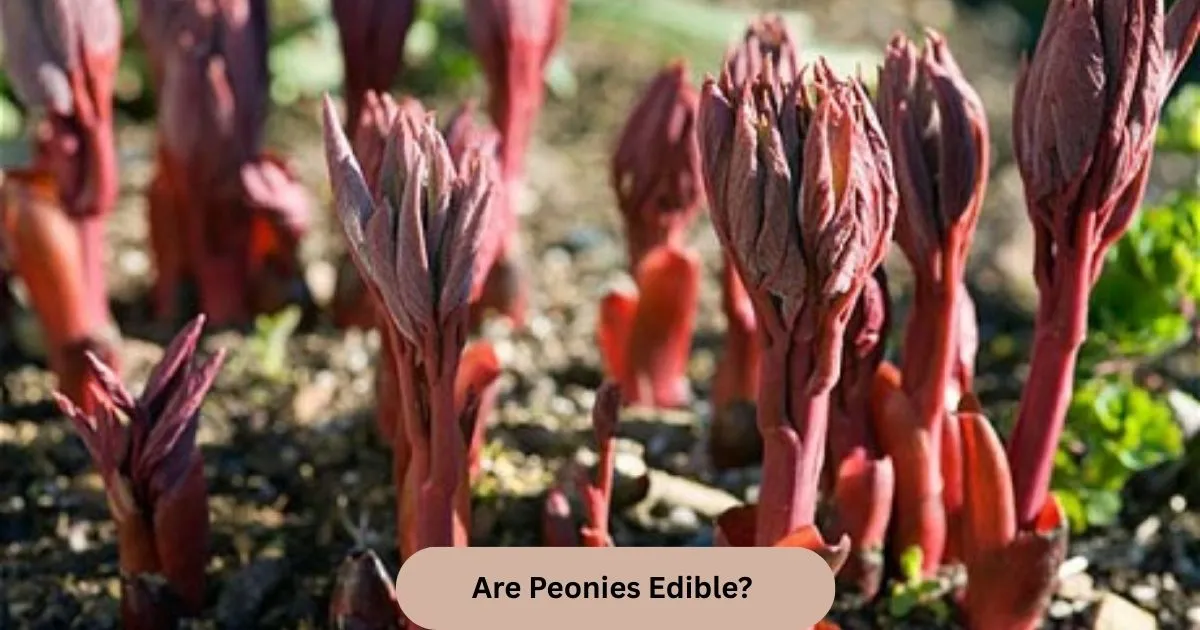Peonies are beautiful flowers commonly grown in gardens for their vibrant colors and pleasant fragrance. However, you may wonder if these flowers are edible. While they are stunning to look at, it’s important to understand whether they are safe for consumption. In this article, we will explore the edibility of peonies, potential health benefits, risks, and ways to safely enjoy them.
What Are Peonies?
Peonies are flowering plants that belong to the genus Paeonia. They are known for their large, colorful blooms and are commonly found in gardens around the world. Peonies typically bloom in late spring or early summer, making them a popular choice for floral arrangements and special occasions. With more than 30 species and numerous cultivars, peonies come in a variety of colors, including white, pink, red, and purple.
These flowers have been used in traditional medicine in some cultures, although they are not commonly consumed in modern diets. Despite their beauty, the main question remains: can peonies be eaten safely? Let’s dive deeper into the edibility of these flowers.
Read More: When Should You Transplant Peonies?
Are Peonies Safe to Eat?
Peonies are not commonly listed as food plants, and there are limited studies on their edibility. While some parts of the peony plant are not toxic, others can cause adverse effects when consumed. The roots, in particular, have been used in herbal medicine for centuries. However, consuming large amounts or the wrong parts of the plant may lead to digestive upset.
It’s important to note that while peonies are not typically harmful in small amounts, they are not considered a food source like herbs or vegetables. Most experts recommend that you avoid eating peonies unless you are sure they are safe and prepared properly. Let’s look at the specific parts of the peony plant to understand its edibility better.
Which Parts of the Peony Are Edible?
In general, the petals of peonies are the safest and most commonly consumed part. Peony petals are mildly sweet and can be used in salads or as a garnish. Some people even make peony petal jam or syrup. These petals are edible in small amounts and may add a touch of color and flavor to your dishes.
The peony roots and leaves, on the other hand, should be avoided. While the roots have been used in traditional Chinese medicine, they are not suitable for casual consumption and can cause harmful side effects. Eating large amounts of peony roots or leaves can lead to poisoning, including nausea and vomiting.
The Health Benefits of Peonies
Peonies have been used in herbal medicine, particularly in traditional Chinese medicine, for their potential health benefits. Some people believe that peony roots may help with issues like inflammation, digestive problems, and even mood regulation. Peony root extract is sometimes used in supplements to treat menstrual cramps and muscle aches.
However, it’s important to note that these benefits are more likely linked to the use of peony root in controlled amounts and under professional guidance. Consuming peony flowers, especially in large quantities, will not offer the same health benefits and may cause harm instead. Always consult a professional before using peony for medicinal purposes.
Risks of Eating Peonies
While peonies are generally not considered toxic, they can cause allergic reactions in some individuals. If you are sensitive to certain plants or pollen, eating peonies could lead to symptoms like rashes, hives, or difficulty breathing. If you experience any negative symptoms after consuming peony petals, it’s important to seek medical attention immediately.
Another risk comes from the potential presence of pesticides or chemicals on the flowers. If you plan to eat peonies, ensure that they have not been treated with harmful chemicals. Always wash flowers thoroughly before consuming them, and avoid eating any flowers that have been exposed to pesticides.
How to Use Peonies in Cooking
If you decide to experiment with eating peonies, there are a few ways to incorporate them into your meals. The most common use for peony petals is in salads or as a garnish for cakes and desserts. Their delicate petals can be sprinkled on top of a fresh salad to add color and a mild, sweet flavor.
You can also make peony petal jelly or syrup by boiling the petals with sugar and water. This sweet syrup can be used in drinks or as a topping for pancakes. When using peonies in cooking, it’s best to use fresh flowers from your garden or a trusted supplier who avoids chemical treatments.
Can Peonies Be Used in Herbal Remedies?
While peonies are generally not consumed as food, they have been used in traditional herbal medicine for various purposes. In Chinese medicine, peony root is believed to have properties that can help with inflammation, pain relief, and hormonal balance. The root is often dried, powdered, and used in small doses as a supplement.
However, you should never attempt to use peony root without proper guidance from a professional herbalist or healthcare provider. Incorrect use of peony root can lead to negative side effects, and not all peony roots are safe for medicinal purposes. If you are considering using peony for any herbal remedy, it’s essential to consult a qualified expert.
Alternatives to Peonies for Edible Flowers
If you are looking for edible flowers to use in your cooking, there are several safe and popular options that you can try. Flowers like violets, pansies, nasturtiums, and marigolds are often used in culinary applications and are known to be safe for consumption.
These flowers not only add beauty to your dishes but also provide a burst of flavor. They can be added to salads, desserts, and drinks, or used to make floral syrups. Always make sure to research each flower’s edibility and source them from a reliable supplier who ensures they are free from pesticides.
Conclusion
In conclusion, peonies are technically edible, but they should be enjoyed with caution. The petals of peonies are safe to eat in small amounts and can be a lovely addition to your meals. However, the roots and leaves of the plant should be avoided, as they can cause harm when consumed.
Peonies are not a traditional food source, and their edibility is not well-documented. If you decide to consume peonies, make sure you are using the right parts of the plant and ensure that they are free from harmful chemicals. When in doubt, consult an expert or opt for other edible flowers that are commonly used in cooking.
FAQ’s
Can you eat peony flowers?
Yes, peony petals are edible and can be used in small amounts in salads or desserts.
Are peony roots safe to eat?
No, peony roots can be toxic and should not be consumed.
Do peonies have any health benefits?
Peony roots have been used in traditional medicine for inflammation and pain relief, but should be used with caution.
Can peonies cause allergies?
Yes, peonies can cause allergic reactions in some individuals, especially those sensitive to pollen.
What are some edible flowers other than peonies?
Violets, pansies, and nasturtiums are safe and popular alternatives for edible flowers.









